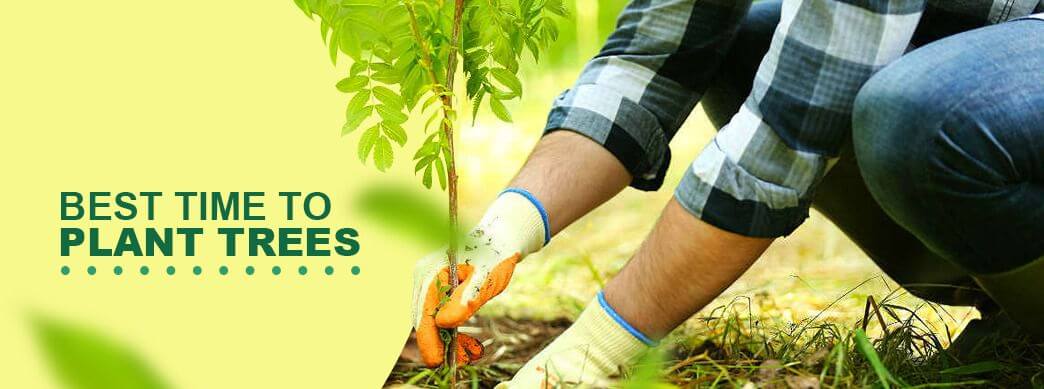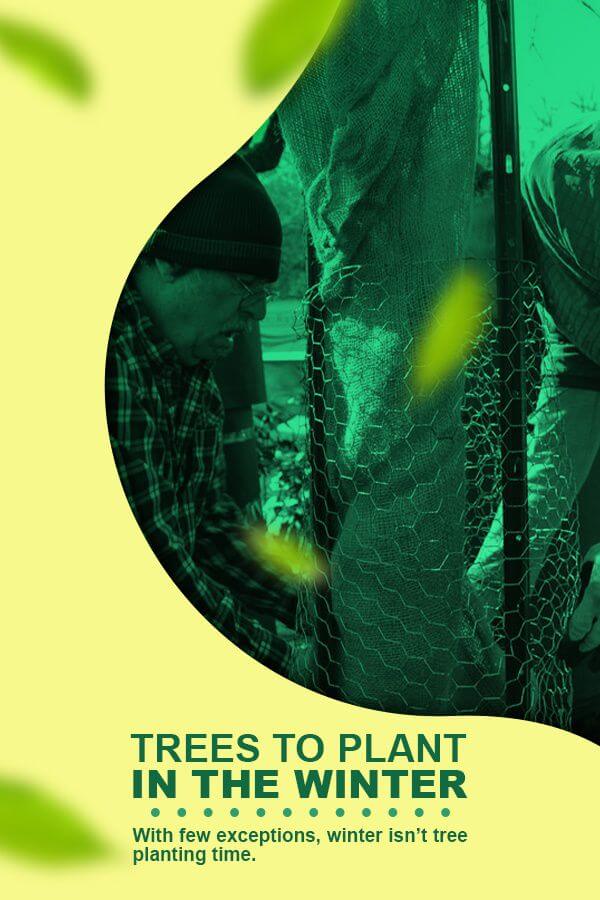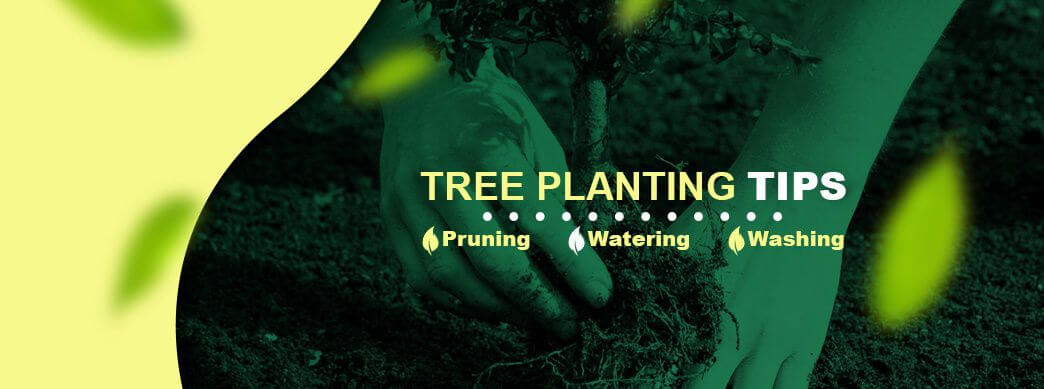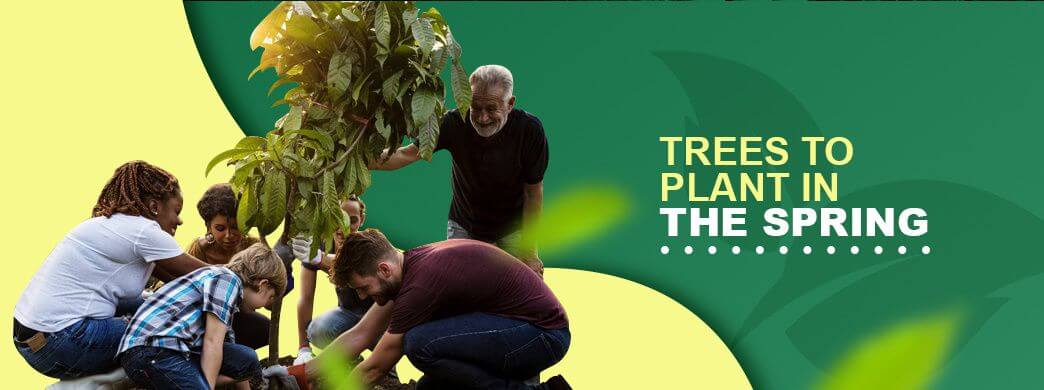
What is the best time of year to plant a tree? It would be nice if the correct answer were any time. Perhaps the best investment or addition you can make to your property is planting a tree. Whenever you plant new trees, you’ll be greatly rewarded with a living organism that purifies your air, creates bird habitat, beautifies your grounds and adds monetary value to your home. For those reasons alone, any time is the best time to plant a tree.
Unfortunately, “any time” isn’t the right answer. Investing in tree planting can be an expensive proposition, and you want to make sure you have the optimum return on your tree investment. You want your trees to quickly establish in their new environment and have the best chance for a long, healthy life. The time of year that you plant your new trees makes an enormous difference in whether they’ll prosper or perish.
Different experts have differing opinions on the best time to plant trees. Their opinions differ because of the location you’re at and the type of tree species you intend to plant. Different American locations have vastly different growing conditions. Those locations dictate what tree species will flourish or fade away. Selecting the right tree species is equally as important as picking the proper planting time if you want survival success.
For instance, if you live in eastern New York State, you’re in a relatively mild climatic zone compared to northern Alaska. However, your Brooklyn, Queens or Manhattan site will still be cooler than what your cousins down in Florida experience year-round. The best time to plant pine trees in New York is different from the best time to plant fruit trees in the deep south and from the best time to plant evergreen trees in the far north.
USE THE UNITED STATES DEPARTMENT OF AGRICULTURE CLIMATIC ZONE GUIDE
The United States Department of Agriculture (USDA) is the go-to source for your guide on local climatic zone conditions. You can easily access the USDA Plant Hardiness Zone Chart by entering your zip code on their web page. The guide will list your region’s frost dates, which you can transfer to your calendar for planting parameters. This will give you the latest fall date and the earliest springtime that is ideal for planting trees.
If you live in the Greater New York City area, for example, you’re in a 7-b zone. That indicates your coldest temperatures will drop between 5 and 10 degrees Fahrenheit from December to February. From that, you can conclude you can safely plant trees between March and November. However, that doesn’t mean it’s the best time to plant trees in NY in mid-summer when daytime temperatures might exceed 90 degrees.
This is where the second part of the tree-planting equation comes in. Selecting a tree species that work in your climatic zone might seem challenging, but it doesn’t have to be when you tap into the Arbor Day Foundations Tree Wizard. This invaluable online tool from America’s leading tree authority also allows a zip code search for species compatible with your climatic zone.
Once you’ve selected a tree species suitable for your zone, it’s time to decide on planting time. Many factors go into this process. The primary consideration is your tree’s tolerance to temperature and light changes. Every tree reacts to root temperature and daylight impact. The key to successful planting is picking the time when your ground temperature is optimum for root development and light conditions restrict foliage growth.
Early spring and later fall are your best times for planting most tree species. This calendar period guarantees frost-free ground when roots can anchor but still has shorter days before photosynthesis turns foliage into active growth. Mid-winter is your poorest time because the frozen ground is nearly impossible to dig and your tree’s roots won’t respond to soil conditions. Mid-summer is also a bad time in most climates. Long days and high temperatures send a tree into shock rather than allowing it to acclimatize naturally.
HOW TO PLANT A TREE
Once you’ve got the right tree, for the right climate, and the right season, it’s planting time. You can find a mass of planting advice online, but here’s a word of caution. Be careful who you listen to, as each planting “expert” seems to have different suggestions on the right way to plant a tree.
Possibly the best advice you can get is from the real experts who grow nursery trees specifically suited for your region. If you’re in New York, the tree experts are Dragonetti Brothers Landscape, Nursery and Florists. Inc. Experienced tree planters like Dragonetti Brothers are happy to give you these step-by-step directions on how to pick and plant a tree, and when to plant trees in New York:
- Tree Type: You have a choice between two primary tree types. One is evergreen trees that keep their leaves or needles all year long. The other type is deciduous trees that drop foliage in the fall and start new growth in the spring. Deciduous trees are more time-sensitive for planting than evergreens as they’re more susceptible to light and temperature shock than evergreens. Therefore, you want to plant deciduous trees as early in the spring or as late in the fall as you can.
- Root Containment: Nursery trees have three different root containment methods. One is balled roots bound in burlap or mesh. Second are container trees where the root system sits inside pots. Third are bare root or sapling trees, which are smaller specimens in the early life stage. Most trees you’ll purchase will be either balled root or in containers. The difference is that container trees have grown up in pots where balled trees started life in the ground and are dug up for transplanting.
- Hole Digging: There’s an old tree planting saying that goes, “Dig a $10 hole for a $1 tree”. You’ll find a lot of wisdom here, as digging a proper hole makes or breaks your tree-planting success. Your excavation needs to support the tree’s weight, including the trunk, branches and root system. However, your excavation area must be wide enough to allow unrestricted root expansion. A rule of thumb is your hole should be two to three times the width as its depth. The best-prepared tree holes are saucer-shaped with the deepest section at the center of the tree’s root base.
- Moving Your Tree: No matter what size your new tree is, make sure you move it correctly. Do not lift your tree by the trunk or its branches. Doing so stresses your wood strength and can tear it from its life-giving root system. Instead, handle your tree by the root ball or container. This way, gravity’s stress stays at its lowest point and your tree stays intact. If you have a large tree, make sure you get help moving it. Don’t overlook making it easier on your back by using a wheelbarrow or yard wagon.
- Unpacking Your Tree: Whether you have a containerized tree or root-balled specimen, you’ll need to unpack it before setting it in the hole. It might be tempting to leave the packing material around the roots and just plunk it in the role, but this will be fatal to the tree. Packing material is there to temporarily hold your roots together, not stay underground. Make sure you slip your root ball from the pot or strip away all burlap and ties. No packing materials should go in the hole no matter how tempting it is to bury the wrappings.
- Prepare Your Roots: Almost every tree requires some root preparation before it’s ready to plant. Containerized trees need more attention than root-balled trees, as being trapped inside a restrictive pot causes the roots to circle and entwine. Balled trees have their roots pruned during extraction. However, that doesn’t mean they don’t need adjusting before placing in the ground. Root-bound trees should be carefully cut to separate root strings. You can do this with a sharp knife or by hand if the plant material is soft enough. Be careful not to damage more root fibers than necessary to free them.
- Root Flare: This is the most important point in all of tree planting. The root flare is the transition point where the tree trunk turns into the root system. It’s a notable projection where the trunk flares and becomes a mass or roots rather than a single stalk. This is a highly sensitive point as it’s an oxygen- and nutrient-sensitive zone. It’s critical to plant your tree so the root flare is slightly above the finished grade — too high and your tree will starve, but too low and your tree will smother. Make sure your root flare is protected correctly.
- Backfill Soil: Refilling your tree’s excavation site is another important part of the planting process. Make sure you use the natural soil extracted while digging the hole. While it’s okay to remove rocks, stones and hard lumps, you want your tree settling into the native environment rather than in some artificial soil combination. Contrary to what many planters say, there’s no need for sand, peat or compost additives. Your tree will grow best in native conditions.
- Backfill Pressure: Hand tamping is all that’s required for backfill pressure. Don’t be tempted to stomp the fill around your tree’s root system or to pound the soil into place with a board. Tight pressure restricts air and water through the soil. You only need enough backfill force to keep your new tree supported. Any excessive force will be counterproductive.
- Staking: It’s not necessary to stake every newly planted tree. The only time you require supportive stakes is when the tree’s trunk or root system is too weak to stand alone. This is a judgment call. If you think staking is right, make sure your stake doesn’t touch the tree trunk. You also need to tie the trunk to the stake with a loose connection that won’t choke the tree.
- Watering, Mulching and Fertilizing: Proper watering is critical for new trees. Make sure to water in layers as you backfill, and also that the root system is thoroughly wet when you set the tree in the hole. Then, surface water with a slow discharge and keep the new tree soaked throughout the season. Don’t bother mulching the underground soil. However, a good mulch layer on the surface should extend out beyond the tree’s canopy. Fertilizing a new tree will only risk shock. That can wait until the tree is well established.
TREE PLANTING TIPS
You’ll find many tree-planting tips freely available online, in print publications and across the backyard fence. You can take or leave what you like. However, the tree people at Dragonetti Brothers have three proven tips to pass on that are guaranteed to make for better tree planting:
- Pruning: Do not prune a newly planted tree. You should wait at least three years before pruning. Then, only trim off one-fifth of the canopy at the most. You can remove any branches or stems that show damage or disease.
- Watering: Deep watering is a tree survival success secret. Once your tree is planted and set, it’s difficult to get surface water soaking deep down to the root level where it’s so desperately needed. A simple trick is installing a perforated plastic pipe from the surface to the hole’s bottom. Just stick your hose in the pipe and let it fill up.
- Washing: This might sound strange, but washing your tree’s root system before planting pays off. Hosing the root ball removes non-native soil and lets you plant with as much original material as possible. Exposing the roots also lets you inspect for “girdling,” which is destructive root binding within the ball that you can’t see from outside. Washing root balls is becoming an accepted science, according to the popular Garden Fundamentals website.
TREES TO PLANT IN THE SPRING
Spring is the most popular tree planting time in eastern New York. This might be due to the “Gardener Effect” when warmer weather and longer days bring the green thumb out from the gloves. It could also be because local nurseries have their best stock on display in the spring and customers have lots of magnificent specimens to choose from, making it a great time to plant trees in New York.
No matter your motivation, the best trees to plant in the spring are deciduous species. That could be shade trees, ornamental flowering trees or fruit and nut-bearing trees. Just make sure your transplant happens as soon as the ground is ready and before the tree exits dormancy.
TREES TO PLANT IN THE SUMMER
Summer just isn’t the best time for tree planting. By summer, your new tree should be busy growing above ground, not below it. Summer-planted trees are highly vulnerable to drought and sun scalding. If you have a tree-planting itch in the summer, restrict yourself to hardy evergreens.
TREES TO PLANT IN THE FALL
Arguably, fall is as good a time for tree planting as spring — that’s as long as your tree has shed leaves and started into dormancy. Fall planting lets your tree’s roots find their way into cool soil before the freeze stops growth. Then, your tree can sit quietly over the winter and get another spring root spurt before leaf time returns.
You can plant every spring-suitable tree in the fall. In New York, you have a wonderful selection of common deciduous tree species, like maple, oak and cherry. You can also plant more exotic trees like larch, birch and weeping willow. Fall is the open season for every evergreen type you can grow in your climatic zone.
TREES TO PLANT IN THE WINTER

With few exceptions, winter isn’t tree-planting time. Even in semi-mild American locations like Brooklyn and Queens, your ground conditions aren’t warm enough to work the soil to a tree’s advantage. You’re best to spend your few winter months researching tree species and visiting a local nursery for inspiration.
GET YOUR TREES FROM DRAGONETTI BROTHERS

Dragonetti Brothers is a family-owned landscaping, nursery and tree care business serving the Brooklyn, Queens and Manhattan regions of south-eastern New York. We’ve been here for more than 40 years and support residential, commercial and government projects. Our customers are our top priority, which has always been our core focus as a one-source tree, plant and service provider.
At Dragonetti Tree Removal, you’ll get professional service from courteous staff who know what trees are right for your property. Request a free estimate today on tree removal and care services. Or, drop into Dragonetti Brothers nursery to pick out your next tree to plant to enhance your home’s curb appeal.


